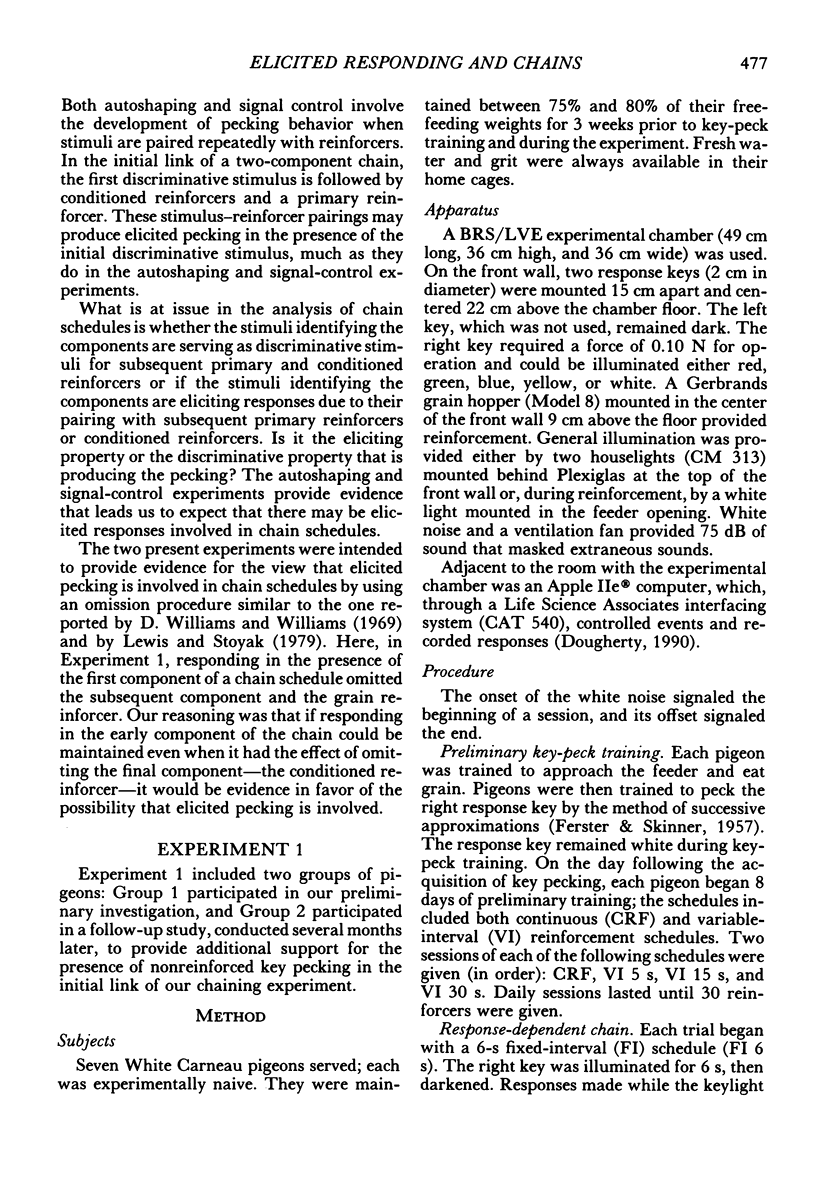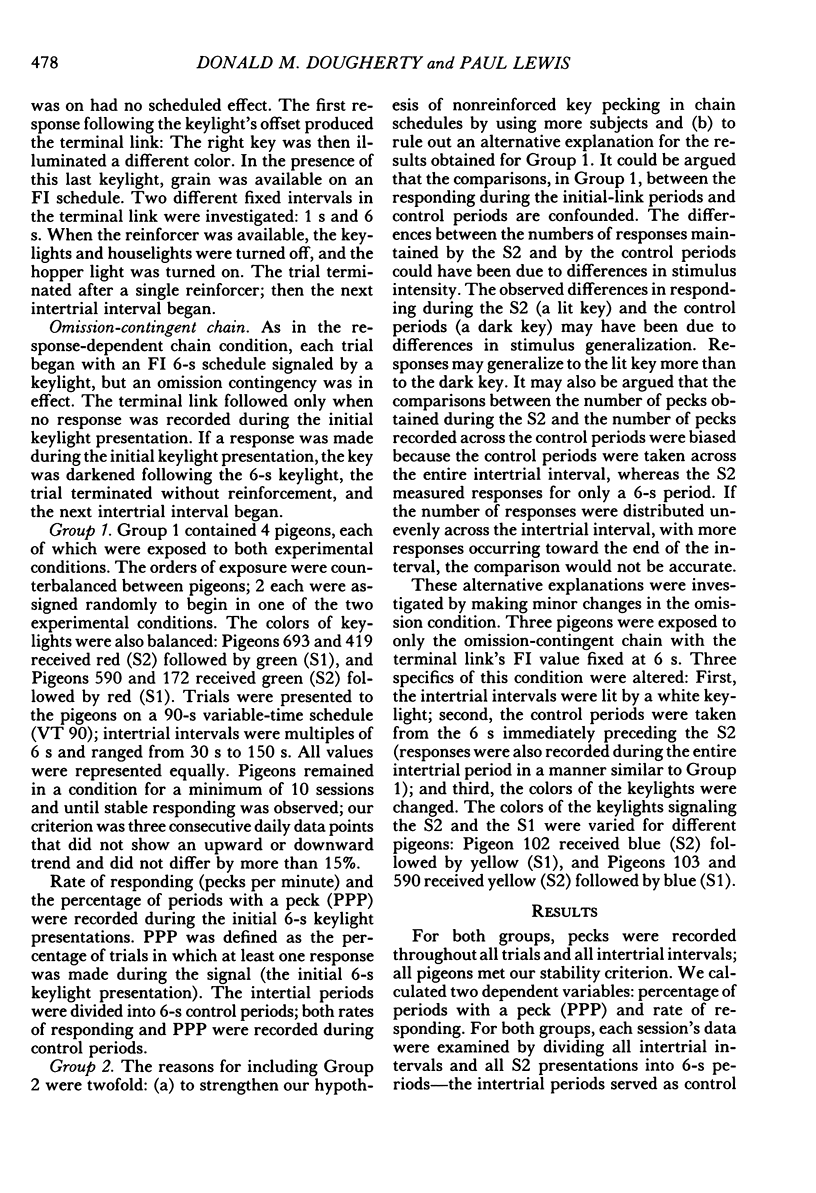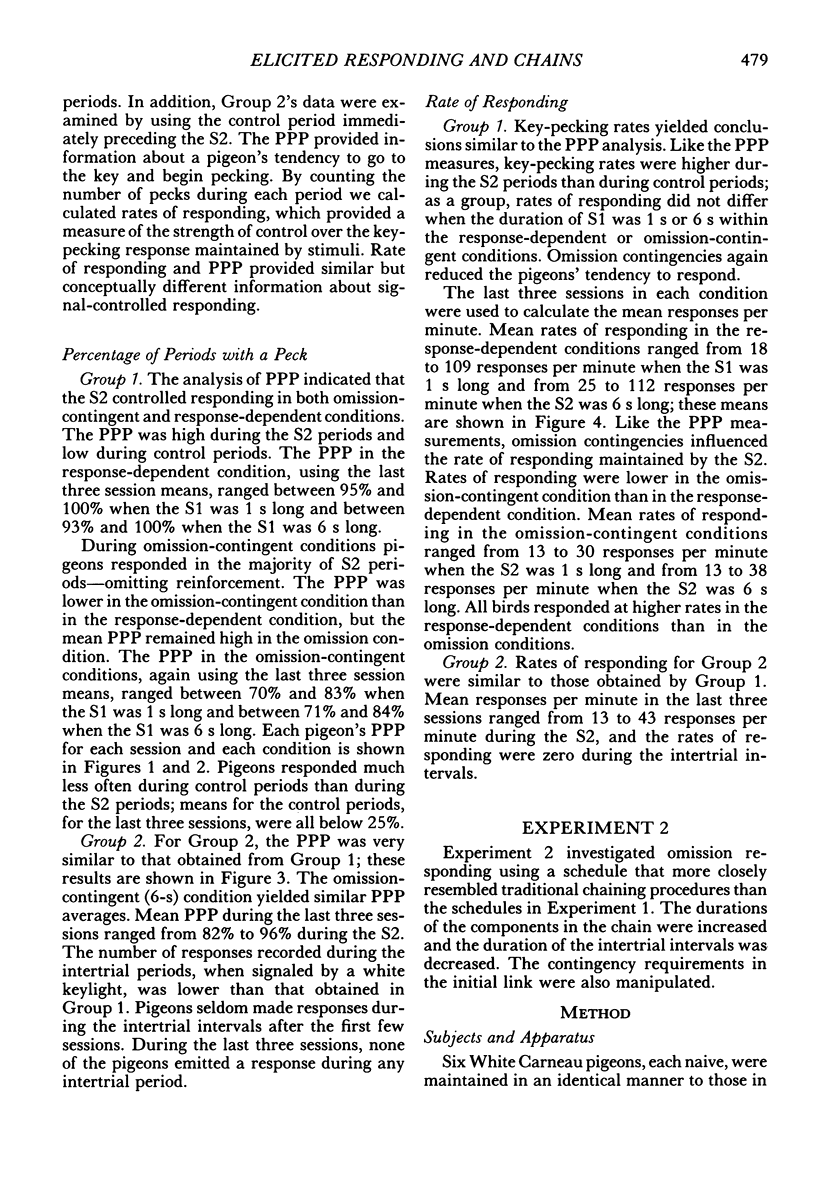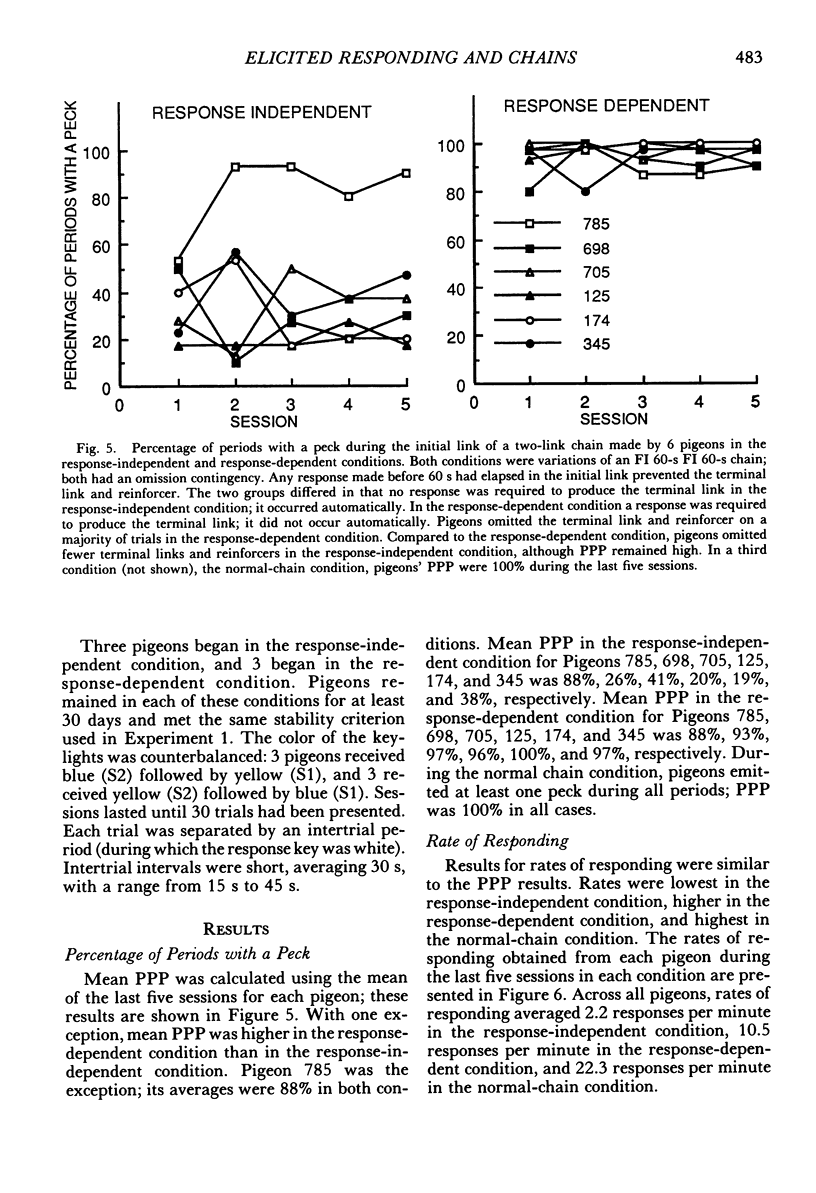Abstract
An omission procedure was employed to study elicited pecking in the first component of a two-component chain schedule. Both components were fixed-interval schedules correlated with colored keylights. The first response following the initial-link schedule produced a second fixed-interval schedule. We studied several fixed-interval lengths in two conditions: a standard response-dependent condition and an omission-contingent condition. The omission-contingent condition differed from the response-dependent condition in that responses during the initial fixed interval terminated the trial (omitting the terminal component and grain). If the terminal component was not omitted, a response following the terminal link's requirement produced 4-s access to grain. Pigeons responded during more than 70% of the initial links in the omission-contingent condition and responded during more than 90% of the initial links in the response-dependent condition. In general, rates of responding were consistent with the percentage data. The responding in the omission condition suggests that there may be elicited pecking, in chain schedules using pigeons, that is not the result of contingent conditioned reinforcement.
Full text
PDF












Selected References
These references are in PubMed. This may not be the complete list of references from this article.
- Brown P. L., Jenkins H. M. Auto-shaping of the pigeon's key-peck. J Exp Anal Behav. 1968 Jan;11(1):1–8. doi: 10.1901/jeab.1968.11-1. [DOI] [PMC free article] [PubMed] [Google Scholar]
- KELLEHER R. T., FRY W. T. Stimulus functions in chained fixed-interval schedules. J Exp Anal Behav. 1962 Apr;5:167–173. doi: 10.1901/jeab.1962.5-167. [DOI] [PMC free article] [PubMed] [Google Scholar]
- KELLEHER R. T., GOLLUB L. R. A review of positive conditioned reinforcement. J Exp Anal Behav. 1962 Oct;5:543–597. doi: 10.1901/jeab.1962.5-s543. [DOI] [PMC free article] [PubMed] [Google Scholar]
- Kelleher R. T. Conditioned reinforcement in second-order schedules. J Exp Anal Behav. 1966 Sep;9(5):475–485. doi: 10.1901/jeab.1966.9-475. [DOI] [PMC free article] [PubMed] [Google Scholar]
- Lewis P., Stoyak M. Signal-controlled responding. J Exp Anal Behav. 1979 Jan;31(1):115–125. doi: 10.1901/jeab.1979.31-115. [DOI] [PMC free article] [PubMed] [Google Scholar]
- Lopatto D., Lewis P. Contributions of elicitation to measures of self-control. J Exp Anal Behav. 1985 Jul;44(1):69–77. doi: 10.1901/jeab.1985.44-69. [DOI] [PMC free article] [PubMed] [Google Scholar]
- Rescorla R. A. Pavlovian conditioning. It's not what you think it is. Am Psychol. 1988 Mar;43(3):151–160. doi: 10.1037//0003-066x.43.3.151. [DOI] [PubMed] [Google Scholar]
- Ricci J. A. Key pecking under response-independent food presentation after long simple and compound stimuli. J Exp Anal Behav. 1973 May;19(3):509–516. doi: 10.1901/jeab.1973.19-509. [DOI] [PMC free article] [PubMed] [Google Scholar]
- Royalty P., Williams B. A., Fantino E. Effects of delayed conditioned reinforcement in chain schedules. J Exp Anal Behav. 1987 Jan;47(1):41–56. doi: 10.1901/jeab.1987.47-41. [DOI] [PMC free article] [PubMed] [Google Scholar]
- Schwartz B. Maintenance of key pecking by response-independent food presentation: the role of the modality of the signal for food. J Exp Anal Behav. 1973 Jul;20(1):17–22. doi: 10.1901/jeab.1973.20-17. [DOI] [PMC free article] [PubMed] [Google Scholar]
- Williams B. A., Royalty P. Conditioned reinforcement versus time to reinforcement in chain schedules. J Exp Anal Behav. 1990 May;53(3):381–393. doi: 10.1901/jeab.1990.53-381. [DOI] [PMC free article] [PubMed] [Google Scholar]
- Williams D. R., Williams H. Auto-maintenance in the pigeon: sustained pecking despite contingent non-reinforcement. J Exp Anal Behav. 1969 Jul;12(4):511–520. doi: 10.1901/jeab.1969.12-511. [DOI] [PMC free article] [PubMed] [Google Scholar]


